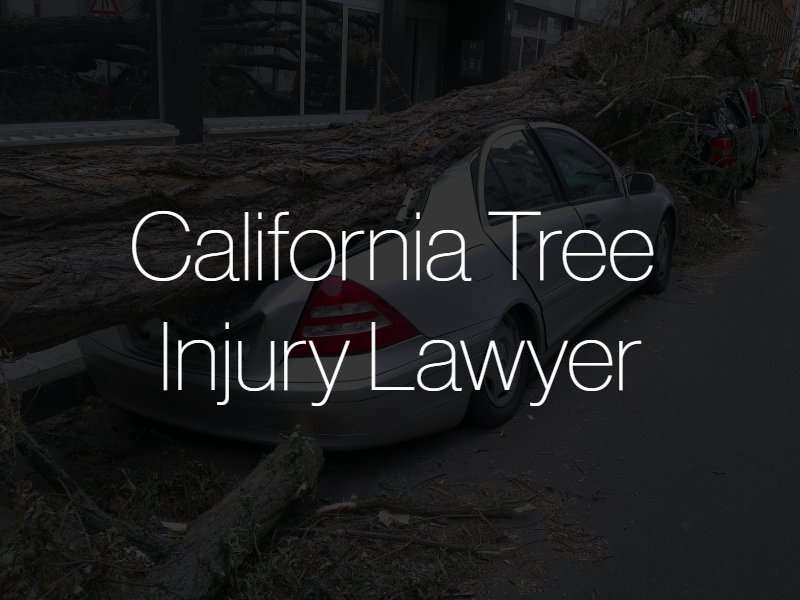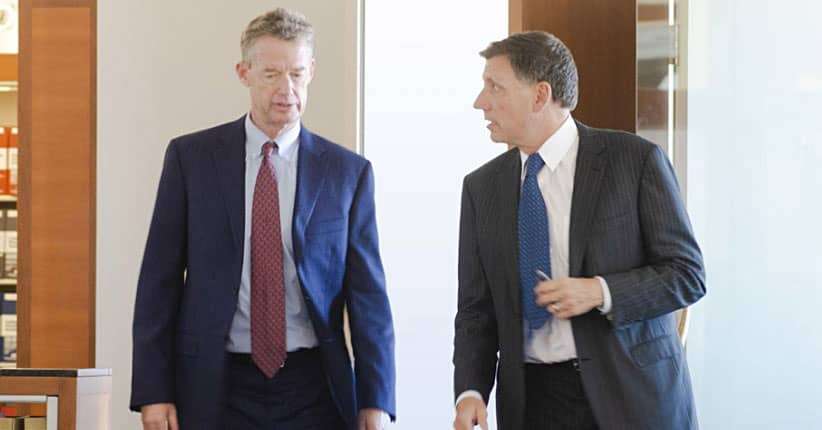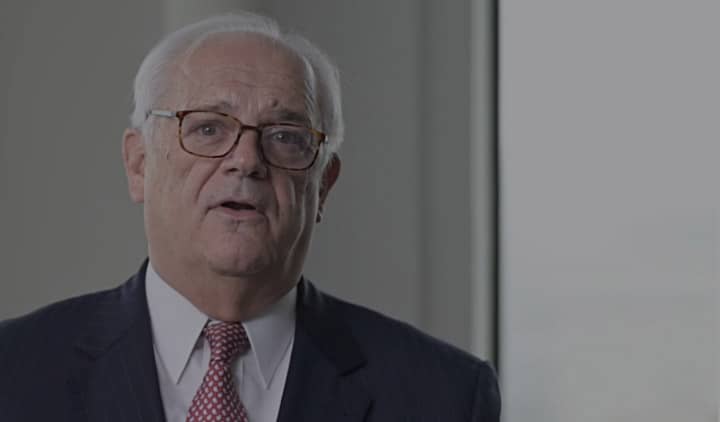Suffering a serious injury due to a falling branch or a falling tree can be a devastating event that nobody can prepare for. Pursuing compensation for your damages can be confusing and frustrating, as determining liability and finding at-fault parties can be time consuming and complicated.
If you or a loved one have been seriously injured due to a falling tree, please contact the law offices of Walkup, Melodia, Kelly & Schoenberger today. We have years of experience in successfully securing settlements and verdicts on behalf of tree injury victims against cities, counties, park districts, and private landowners. Call us at (415) 981-7210 or send us a message online. We can help you recover from your injuries today.
Why Choose Our Law Firm for Tree Injuries?
As one of the premier personal injury firms in the country, Walkup, Melodia, Kelly & Schoenberger has a national reputation for experience, success, and results.
- Our personal injury attorneys have more than 60 years of legal experience helping injured people recover financial compensation.
- We have a reputation for success, recovering more than $1 billion in total verdicts and settlements on behalf of our clients.
- We are the most award law firm in Northern California, with an unmatched record of multimillion-dollar results.
- We represent all clients on a contingency fee basis. We don’t charge any upfront costs, and we don’t charge any fees unless we secure a favorable settlement or verdict on your behalf.
Our personal injury attorneys are here to help fight for the maximum possible compensation on your behalf.

Why Do You Need a Lawyer?
Often, when a tree falls and injures someone, liability falls on the owner of the property on which the tree grows. Sometimes responsibility may be shared with a county or city or town or homeowners association.
Properly and quickly identifying responsible parties is often a complicated and time-sensitive process, when a tree causes an injury it is important to take photos, gather physical evidence, and hire an experienced tree injury lawyer as soon as possible.
When the attorneys at Walkup, Melodia, Kelly & Schoenberger evaluate a tree related injury case, we look at property ownership records, research deeds and title, review local government rules governing tree responsibility, and search archives to determine the history of the subject tree. Local permits and public records requests can also be useful in building a timeline of the history of a tree.
Once we have filed a lawsuit, we can use depositions, document requests and subpoenas to further determine how responsible landowners, city workers, county employees, homeowners associations, or private gardening and maintenance companies may have been involved in the planting, maintenance, and inspection of the tree.
Walkup Law Has a Record of Success in Tree Injury Cases
At Walkup Law Office, we have a reputation for results in cases involving tree accidents in Northern California. Some of our most notable cases include:
- Bus Passenger v. Public Entity. We recovered $750,000 for a woman who suffered spinal injuries when hit by a falling branch while waiting at a bus stop.
- Family v. Public Entity. We recovered $1 million for a family whose mother/grandmother was struck and killed by a tree that fell in a park.
- Family of Car Driver v. Large Land Owner. We recovered $3.4 million for a family of a 53-year-old woman who was killed when a diseased tree fell into the roadway.
- Zhou v. City of San Jose. We won a jury verdict of $1 million for a family whose father/husband was killed by a diseased tree in a busy San Jose park.
- Bicyclist v. Private Property Owner. We recovered $900,000 for a bicycle rider who suffered broken bones when a diseased tree fell into the road and struck him
Common Injuries as a Result of Trees
Tree injuries are often severe. Even smaller tree branches are heavier than they look, and the unexpected nature of such events means that people do not have the time to actually brace for an injury occurring.
As a result, victims can suffer a number of serious injuries from a falling tree, such as:
- Concussions, facial fractures and brain injuries – All types of head injuries and other traumatic brain injuries are common when a heavy branch strikes a person’s skull.
- Spinal cord injuries – The same weight and force that can cause a severe head injury also has massive compressive force on the spine seriously injuring the spinal cord of an individual. Associate injuries can include compression fractures of the vertebrae, herniated discs, and spinal process fracture-dislocations that cause paralysis.
- Broken and/or dislocated limbs are common with unexpected trunk and limb blows, along with more serious fractures such as rib and sternum breaks.
- Internal injuries – The weight of a falling tree can lacerate livers and kidneys, puncture lungs, or damage other internal organs.
- Wrongful death
Falling tree and branches almost certainly lead to serious injuries.
Common Causes of Tree Limb and Trunk failures
Tree injuries are primarily caused by falling branches and trunks. Numerous factors can contribute to an increased risk of falling trees and limbs.
- Tree age, disease, rot, and insect damage and compromised root structures are often implicate in tree relate injuries.
- Healthy trees have a strong foundation of root systems that ensure trees are firmly planted into the ground. This, combined with wood that is dense and heavy, means that there is an increased resistance to circumstances which may lead to the tree falling over. Trees which are dying and/or dead are light and brittle with weaker root systems – leading to branches that can break easily and a tree that is more susceptible to breaking, cracking, and falling due to wind or other weather conditions.
- Improper maintenance, failure to prune, and over-watering are also potential cause of failure. All trees must be properly maintained in order to ensure their structural integrity. Branches must be pruned regularly so that they are not top-heavy – uneven, too frequent, overaggressive pruning can be detrimental to the tree. Tree topping can cause incredible stress for a healthy tree, while also leading to the growth of smaller branches that are more prone to falling.
- Sudden weather conditions. Severe rain, wind, and snow storms can cause branches to break off and fall, and even uproot whole trees in more severe conditions.
- Defects within the tree.
- Improper installation of a tree.
What Are Some Signs That a Tree Might Be in Danger of Falling?
There are common physical indicators that a tree may be in greater risk of falling or collapsing.
- The tree is missing bark. This outer layer of a tree is a good indicator of a tree’s health and structural integrity. A tree that is missing large chunks of bark and has deep cracks may indicate that the tree is in distress – leading to a potential break or fall.
- The tree is dropping branches at a greater rate. It’s natural for trees to prune themselves naturally by dropping branches, but if they are doing so more commonly than usual, it may be a sign of the tree conserving nutrients and cutting off any “non-essential” limbs.
- The tree is leaning at an unnatural angle. Trees typically don’t grow completely straight, but those that lean at an extreme angle should be monitored for a high risk of falling. This could be due to poor weight distribution at the top of the tree or a damaged or otherwise unhealthy root system. Keep an eye out for any exposed roots at the base of the tree or soil that may be cracked and piling on the side opposite of the lean.
- The trunk has an open hole. This could indicate decay or rot after a branch has broken off the tree – leading to a hollowing out of the trunk, reducing overall strength and structural integrity.
- The tree has multiple trunks. Fully grown trees which have trunks in a U- or V-shape are often significantly less stable than a tree with one fully established trunk. The area where the split occurs can be a weak point for the tree as it matures further.
What Trees Are Prohibited in Northern California?
Some cities and counties in Northern California expressly prohibit certain trees from being planted primarily for safety reasons. For example, the city of El Cerrito has prohibited the following species:
- Coast redwood
- Monterey cypress
- Monterey pine
- Blue gum eucalyptus
- Red gum eucalyptus
This is detailed in the El Cerrito Municipal Code Section 10.90.190, which states: Due to their rapid growth, height at maturity, dense foliage, shallow root structure, flammability, breakability or invasiveness, no person shall plant or allow a new tree that results from the sprouting or other self-propagation, on private property within the city.
This list of prohibited trees varies from city to city in the region, but the information can be fairly difficult to find. If you have any questions about prohibited trees, please contact an experience tree lawyer who is well-versed in all local statutes regarding acceptable tree species.
Who is Liable in a Tree Injury Case?
Generally, if someone is injured by a falling tree, liability in California is covered in the state Civil Codes 833 and 834:
- 833: Trees whose trunks stand wholly upon the land of one owner belong exclusively to him, although their roots grow into the land of another.
- 834: Trees whose trunks stand partly on the land of two or more coterminous owners, belong to them in common.
Those who “own” the tree on their land are generally liable for damages. However, there may be other parties which may share liability for any damages as a result of falling trees:
- Any contractors or other professionals hired to maintain a tree. If a landscaper or professional tree maintenance expert fails to do an adequate job to prevent an accident, they may be partially liable for the incident due to their negligence.
- Some trees fall under the jurisdiction of a city, county, state, or even federal government. In these situations, the government entity responsible for the tree may share liability.
Liability can be further complicated by trees with unique circumstances. For example, although street trees are technically on public land, local ordinances or codes governing the tree may indicate that another party may be liable for any damages resulting from the tree. These ordinances can vary based on city and county as well.
Because liability and local governance can quickly become complicated, when someone is injured by a tree it is important to contact an experienced tree attorney to address any questions that may arise.
Contact Us Today
If you or a loved one has been seriously injured due to a falling tree, please contact us immediately to discuss your case. A tree injury can be unexpected, sudden, and devastating to your quality of life. Get the compensation you deserve and hold any responsible parties accountable for their negligence. Call us at (415) 981-7210 or send us a message online to schedule a free consultation.


